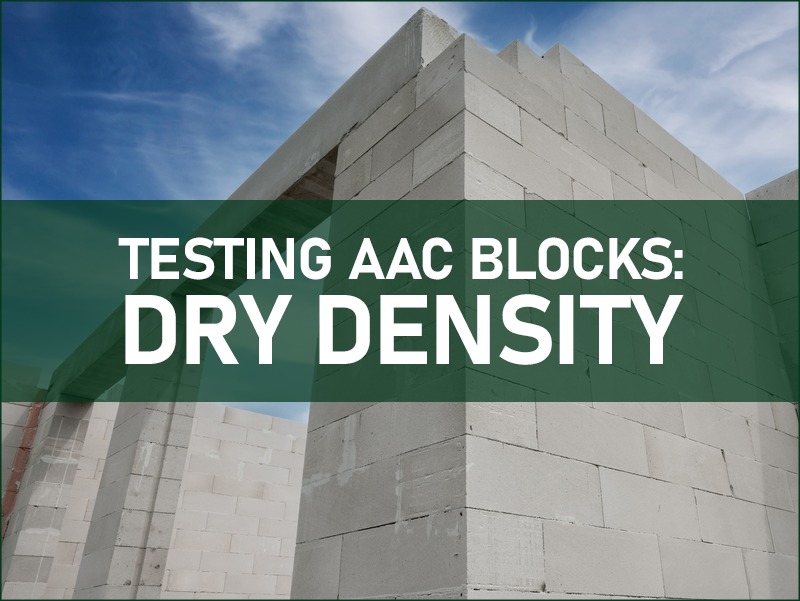
Masonry Work Procedure For AAC Blocks | Ecorex
Among the modern and innovative construction materials used across the world, Autoclaved Aerated Concrete Blocks (AAC blocks or bricks) are considered superior to other conventional materials like burnt clay bricks (aka traditional red bricks) that cause numerous environmental hazards. AAC blocks are gaining more popularity as they are environment-friendly and lightweight construction materials.
AAC bricks are in high demand, owing to their characteristics that are widely recognised in India like high strength, load-bearing, moisture control, seismic resistance, thermal insulation properties etc. AAC blocks are used as a construction material for interior as well as exterior structures.

Work Instructions for Masonry with AAC Blocks
- Ensure that the starter bed is at a zero-tolerance level. To ensure that the AAC block masonry remains in true line and level, a starter beam of thin concrete of height around 100mm is advised. This will also take care of undulations on the floor. The joint thickness of AAC block masonry is typically 3mm which is called thin bed jointing masonry. Hence, unless the starter beam is in exact line and level, with such thin joints, it becomes difficult for the masons to maintain the level.
- For each upper layer, the blocks are fixed by applying a thin layer of 3mm jointing mortar uniformly. Spreading the mortar far ahead results in an earlier setting. Hence, it is advisable to spread the mortar little by little.
- Only slight wetting of the surface of AAC Blocks is enough instead of soaking them in water completely.
- To ensure a lasting bond, immerse the block in a tray filled with 30 to 40mm of water before laying each block. The block, which is slightly wet on four sides, must be placed firmly in position.
- The first course of the masonry requires additional attention and should be uniformly aligned, levelled and plumbed.
- Apply the mortar on the side of a block as you move ahead. Ensure that mortar is uniformly spread over the block and the joints have no gaps.
- If the joints are not filled fully with mortar, it may lead to the cracking of blocks or gypsum plaster due to movement in blocks.
- Ensure gap-filling with 5-10mm coarse aggregates at the top between the wall and the beam bottom. This takes care of the unevenness of the beam and gives it more strength to ensure uniform bearing. It also helps in avoiding cracks that develop in the walls made with AAC blocks due to stress concentration and from the vibration of loads of the upper slab.
- The walls should be painted after the application of gypsum plaster on the inner wall surfaces.
- Avoid using a manual hammer and chisel to drill a screw or carve an electrical conduit, instead use a mechanised cutting tool or a saw for shaping the walls made with AAC blocks.
- If the height of the wall is more than 10 feet, put a patali beam to give more strength to the construction.
- Use a vertical stiffener if the length of the wall is more than 15 feet.
Conclusion
If the above-mentioned are followed while masonry using AAC Blocks, the construction becomes more durable and we can make the most out of the numerous characteristics of the AAC Blocks which give them an edge over traditional red bricks.
Recent blogs

Thermal Conductivity Of AAC Blocks | U value and R value | ECOREX
AAC blocks were invented for keeping the building thermally insulated and keeping the heat out from the building. Let's dig deep into Thermal Conductivity of AAC Blocks.

Top 5 AAC Block Manufacturers In India
Here is a list of the top 5 AAC block manufacturers in India. Because as a property owner, it is advised to have a working knowledge of different AAC block manufacturers.

Testing AAC Blocks: Compressive Strength | Ecorex
One of the most important characteristics of AAC blocks for the user is their compressive strength. Drying Shrinkage, Dry Density, as well as Compressive Strength, have different test procedures. Let's find out more together.

Testing AAC Blocks: Dry Density | Ecorex
Most of the popularity that AAC blocks have gained over the years is due to their unique characteristic of being lightweight. This is checked with the help of a dry density test.
